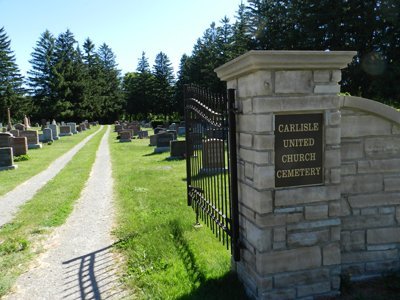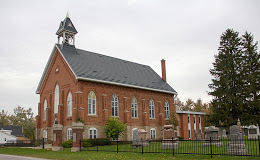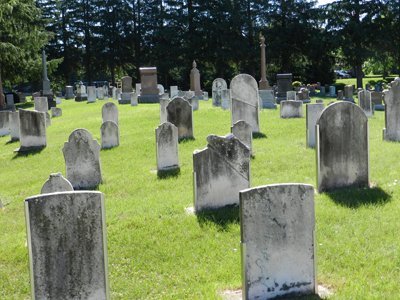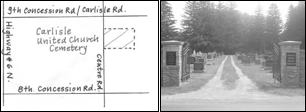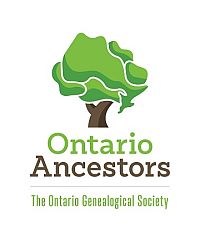Description
CEM 159-Rev_carlisle_united_church_cemeterytreetStreet
Other Known Names: “Chapel at the Twelve” Cemetery, Carlisle Methodist Cemetery
Street Address: 1432 Centre Road, Carlisle
Location: Lot 7, Concession 8 East Flamborough Township
Type of Cemetery: Religious (Canadian Wesleyan Methodists, Methodist, United )
Responsible Agency: Carlisle United Church Cemetery Board Status for Burials: Open for burials Plot Plan: Exists Size: Medium, 750 monuments
Fencing: Chain link and iron railings Monument Types: Flat, upright and columns Monuments of: Marble, granite, metal
Date of Opening: 1836
History:
In the early 1830s, four families gathered at the Centre Road home of John and Catherine Eaton, in the small community then known as Eatonville, to meet as a Methodist congregation. In 1836, an Irish immigrant from the settlement, Alexander Kerr was killed by a tree fall, and was buried nearby as the first known interment in what would become Carlisle United Church Cemetery. In 1839, a wooden chapel and school were built, and referred to as the “Chapel on the Twelve”, on an acre of property given to the Wesleyan Methodists by John Sherman. This property, part of the present cemetery, was far enough away from the nearby Twelve Mile Creek to be safe in times of flooding. In 1891 the present large brick church was built to the north of the cemetery property. There have been at least two additional purchases of property as needed for expansion.
On the original layout of graves, which cost $4 to $6 each, names were written on four wooden boards nailed across the rear of the church. The layout was kept in a hand- made wooden envelope – “keeping it dry and secure from all possible danger.” The cemetery remains in use, with plot plans and new interments.
A white bronze and metal monument exists within the Cemetery erected in memory of John and Catherine Eaton, early settlers of the area and their many descendants.’
Notable Burials:
John Eaton (?-1837) Carlisle pioneer and founder of Methodist church Freeman Green (1828-1885) Manufacturer
The first people to settle in what is now Carlisle were native Canadians of the peaceful Neutral tribe. According to archaeological studies, about one hundred Neutrals created a hamlet and burial grounds on lands bordering the Twelve Mile Creek. They lived here between 1580 and 1600, before being wiped out by the Five Nations Iroquois.
The first people of European descent to settle in Carlisle were John and Catherine Eaton in 1826. As other settlers gradually moved in around them, the Eatons opened their home to the first regular Sunday services of worship. By 1839, the first Chapel at the Twelve was built, serving both as school and church.
Although John Eaton was the first permanent settler to live in Carlisle, he was not the first to be buried here. That distinction belongs to an Irish immigrant named Alexander Kerr, who was killed on July 10, 1836 when a tree fell on him. Land for the first Christian cemetery was being cleared about this time and Mr. Kerr became the first occupant.
Since then, the cemetery at Carlisle has been enlarged three times and is one of the last under the direct care of the United Church of Canada.
John and Catherine Eaton are buried in Carlisle Cemetery. So is Freeman Green, thought to be the first person born in Carlisle and a descendent of Billy ‘The Scout’ Green, a hero of the War of 1812.
